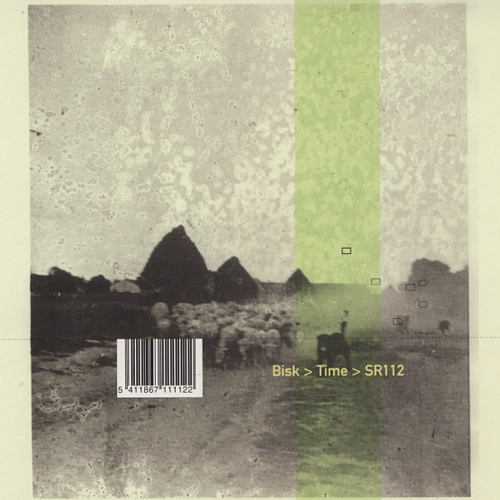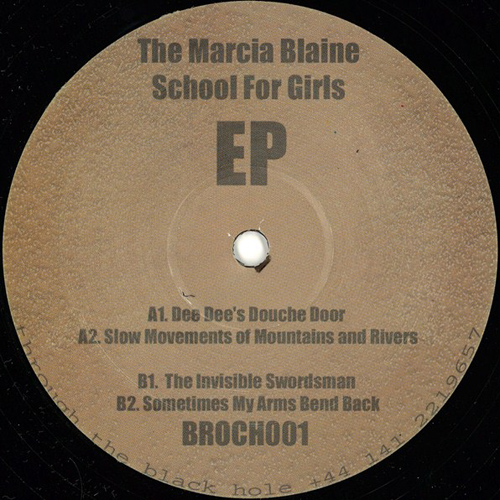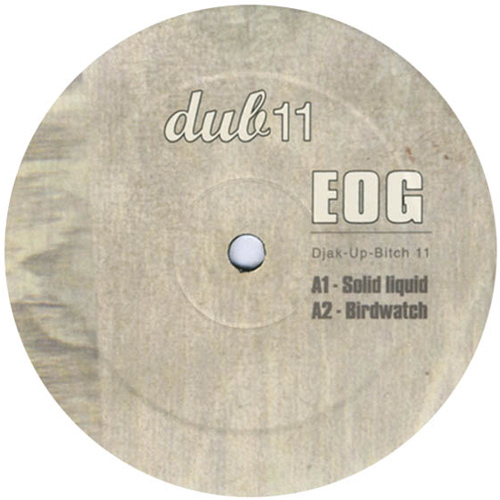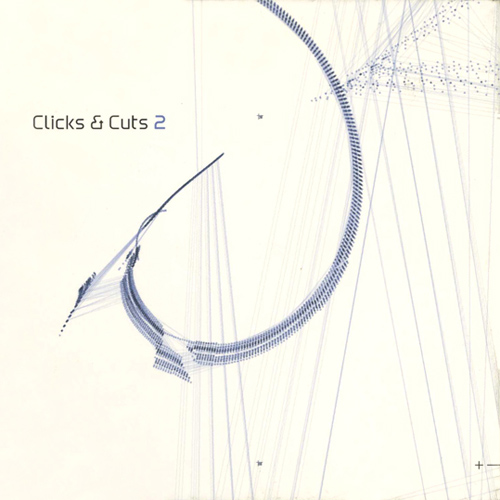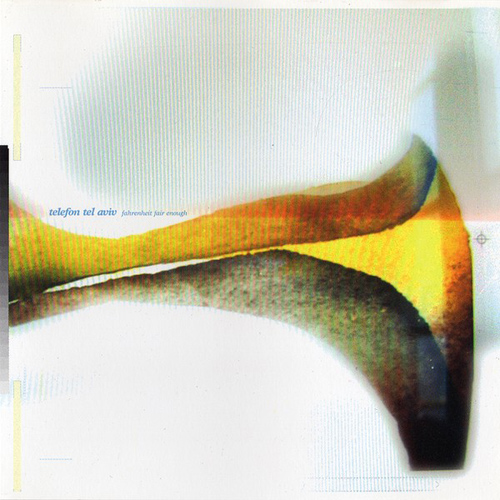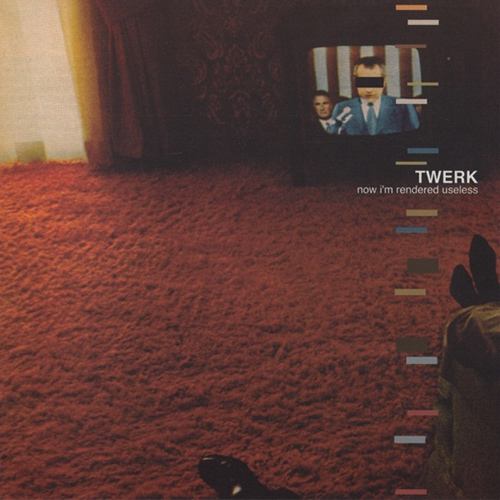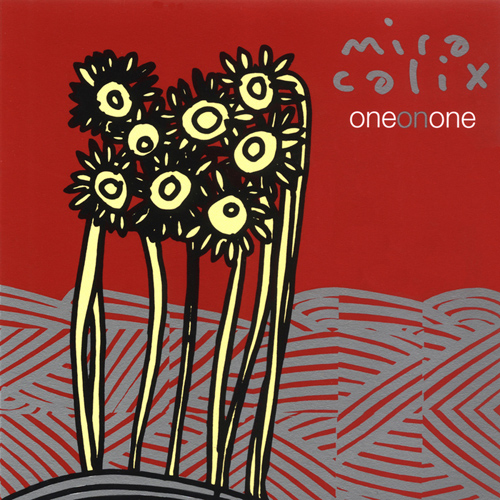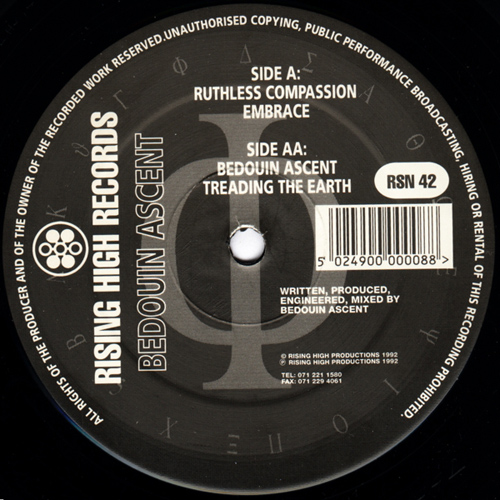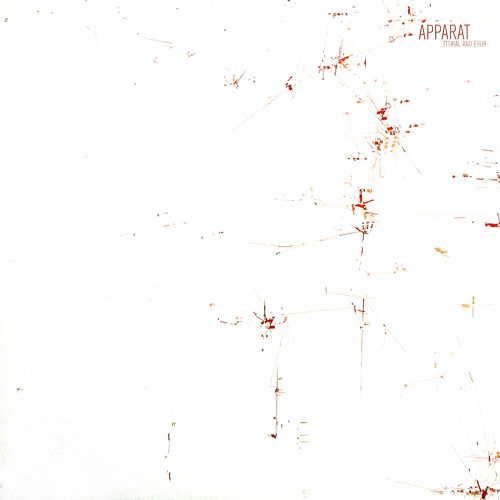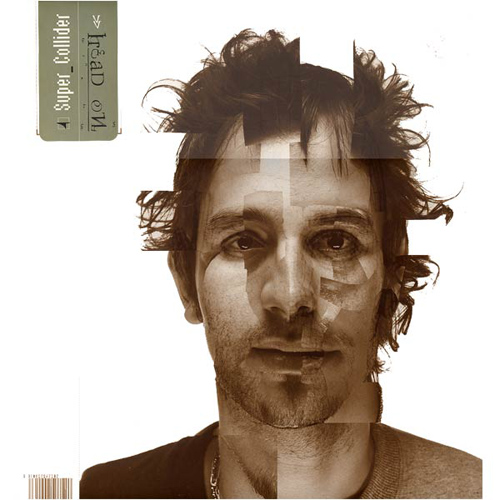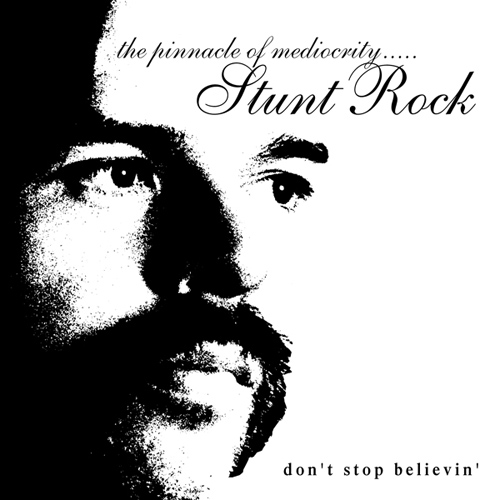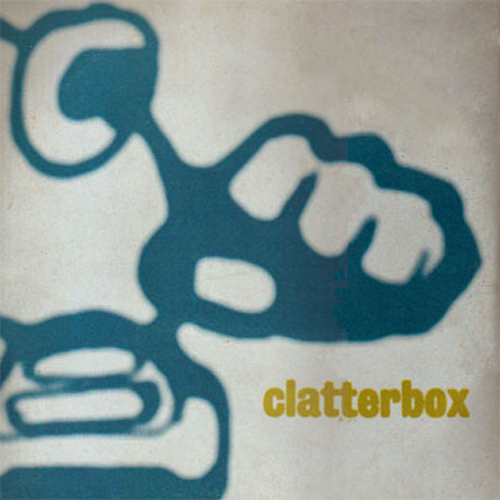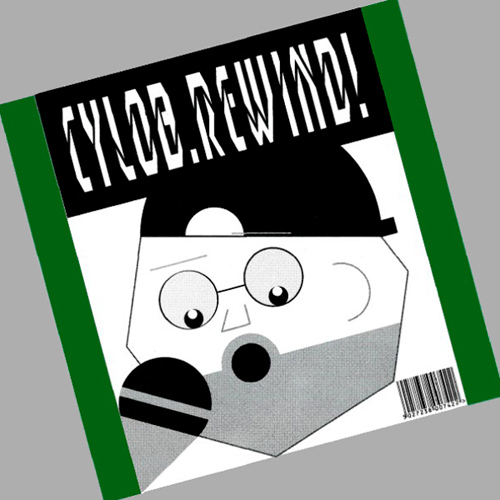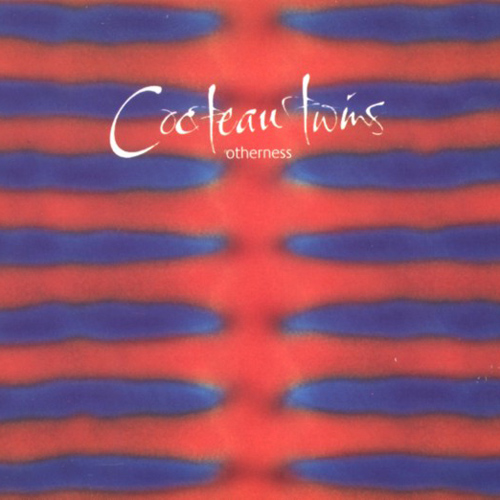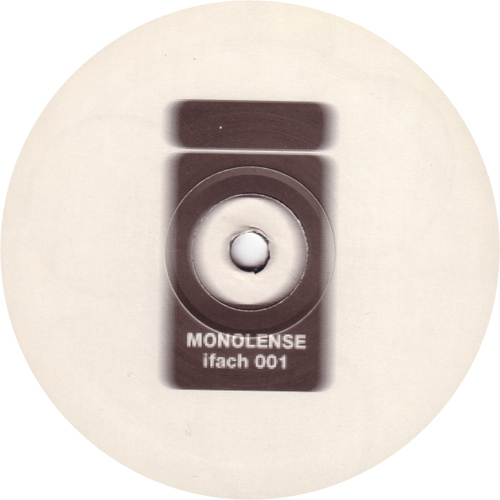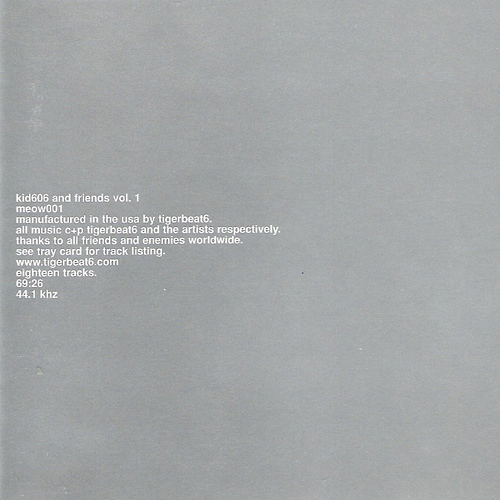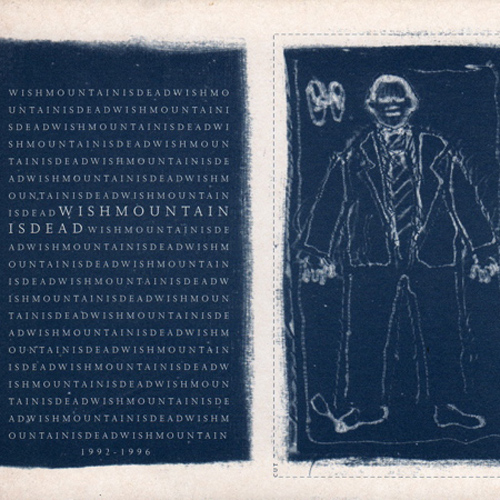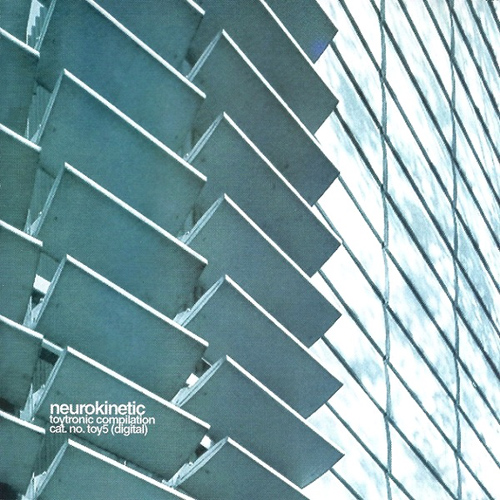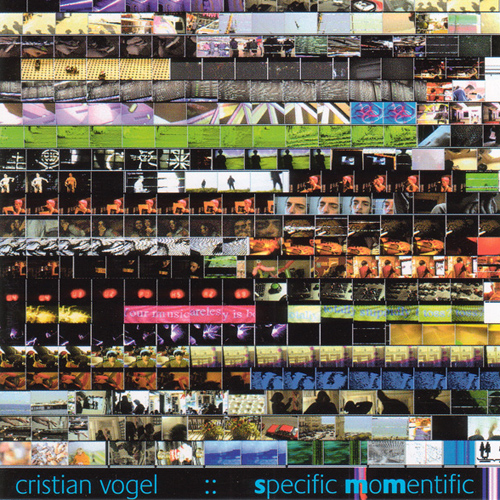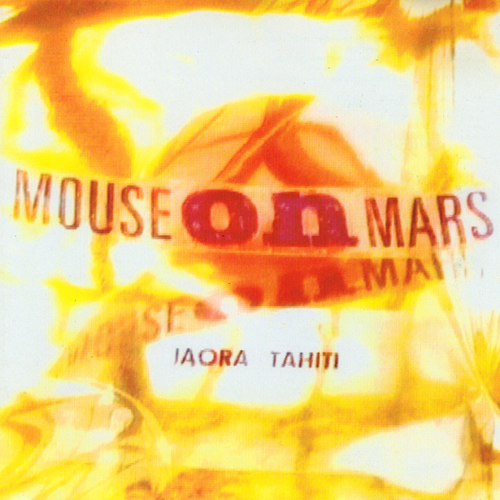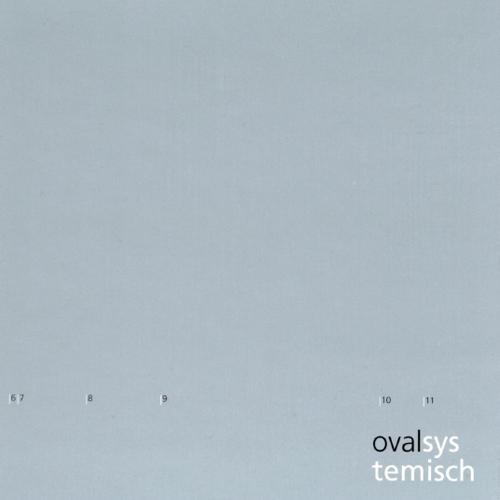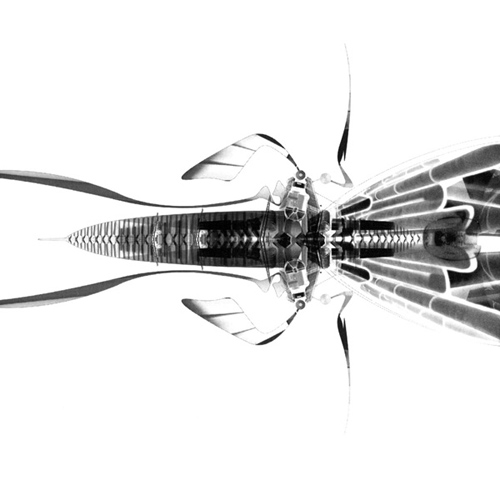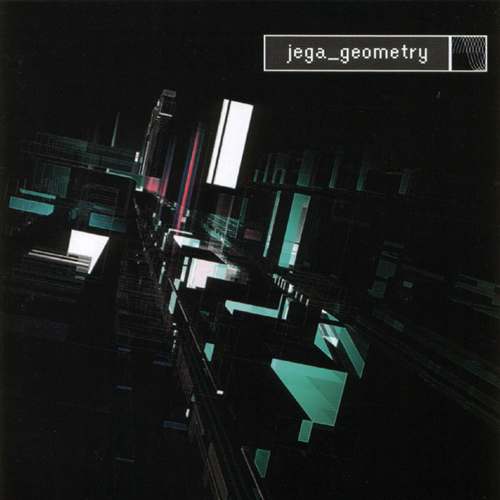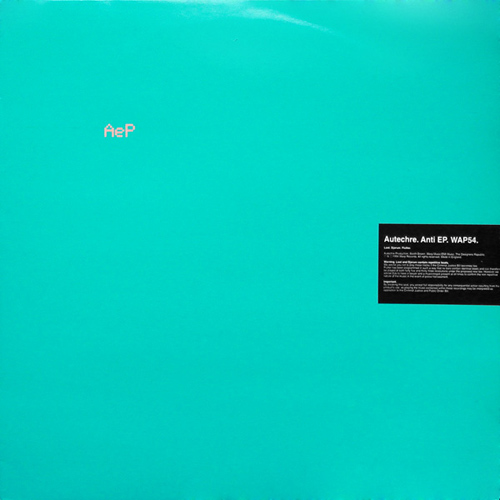Head here to stream the list as a single YouTube playlist.
Nobody ever wanted to call it IDM.
Braindance, electronica, bleep techno – anything was better than the US-centric (and still awkwardly disparaging) ‘intelligent dance music’, but over time the term has stuck. We can thank early ‘90s mailing list the IDM List for the awful acronym. The list was used as a platform to discuss a growing set of artists pursuing experimental forms of dance music, and became oddly popular as the music flourished in tandem with the internet itself. Eventually it was being used so much that we all stopped fighting it and gave in, even if it was just to make sure we could sell that rare Skam 12″ on eBay or Discogs without having to re-list.
If there was ever a scene to embrace new methods of social networking (before it was called social networking) it was IDM. Fans populated heated messageboards and traded tracks on early, buggy filesharing programs, and the artists themselves would share techniques and connect with labels using internet relay chat (IRC). Limited edition runs in progressively more elaborate packaging would be sold online and then resold for ridiculously inflated prices. The internet may have been in its infancy, but IDM was very much at home in a virtual world.
It made sense, really: although the genre started as a reaction to Europe’s goggle-eyed rave culture (if you’d ever strayed into a chillout zone, you’d know why), IDM was ultimately driven by the development and proliferation of cheap (often free) music production software, coupled with a desire from many of the artists to outdo their peers. Production tricks and sound design were often valued over compositional nous, and the scene fractured into a spectrum of internet-friendly micro-genres from the drill’n’bass of Squarepusher and Bogdan Raczynski to the crunchy melodic sounds of Toytronic and Merck.
It was also a scene that was driven by labels. Skam, Warp, Planet Mu, Toytronic, Isophlux, Merck, Musik Aus Strom, Schematic and more garnered more attention than the artists themselves. New labels would spring up overnight, release a compilation and a remix 12″, and disappear in an instant. Even back in the late ’90s, navigating the genre was a difficult task.
A good decade later, it’s far easier to separate the wheat from the chaff, and to hear who was simply trying to rewrite Autechre’s Chiastic Slide or Aphex Twin’s Richard D. James Album and who was genuinely coming up with the goods. And looking back now, what might’ve seemed niche and geeky then can often seem strangely accessible, even prophetic. Although the scene itself may have dissolved as those hungry for the new moved onto dubstep, grime, post-rock or folktronica, the sounds kept reverberating. With everyone from Kanye to Objekt to Skrillex to FlyLo to the PC Music crew all openly referencing the fidgets and glitches – but also the unashamed digital emotions – of the ‘90s experimentalists, these sounds have been fully woven into the fabric of our musical lives.
John Twells (who, full disclosure, recorded IDM under the Xela moniker) and Joe Muggs have gone through their dusty collections of coloured 10″ vinyl and elaborate Designers Republic sleeves to weed out our 100 favourite IDM tracks

100. Jetone
‘Fukfunk’
(2000, Pitchcadet)
Before Tim Hecker decided to become a drone deity, he made IDM. It’s been all but forgotten now, but back in 2000 he put together the really rather good Autumnia LP, before deciding, a year later, to adapt the project to fit the nascent Montreal glitch house scene. If you’ve ever wondered what Tim Hecker would sound like with beats, here’s your answer.
99. Bisk
‘Experience’
(1996, Sub Rosa)
We wouldn’t be doing our job if there was no mention of the mighty Sub Rosa, the dark beating heart of the avant garde for more decades than we care to remember, and a label that absorbed ‘90s weirdcore electronics like it was born for it. This delightful freakout by Naohiro Fujikawa is kitsch, kooky and intensely, intensely peculiar.
98. The Marcia Blaine School For Girls
‘Sometimes My Arms Bend Back’
(2002, Dalriada)
Featuring producers who would go on to become The Village Orchestra and Production Unit, TMBSFG were part of a the proto-Numbers Glasgow scene where genres melted into one another. This one stands out for the way it waits until two-thirds of the way through its pretty, folky, baroque arpeggios and scampering drum programming before slamming in an early dubstep bassline.
97. E.O.G.
‘Solid Liquid’
(1999, Djak-Up-Bitch)
It’s pretty safe to say that, if you were making IDM back in the late ’90s, you were probably ripping off Autechre in one way or another. Some did that by aping their glacial, plinky-plonk synth melodies, some by carbon-copying AE’s crunchy, rapid-fire percussion, but few captured the sound quite as well as Dutch duo E.O.G. (Elements of Grief, natch). Sure, their run of 12”s felt like an addendum to Chiastic Slide, but damn, they had the chops.
96. Crunch
‘Grama’
(2001, Musik Aus Strom)
If you were the kind of young lad whose biggest concern about buying his first beat-up hatchback was how many 15” Kickers he could jam into the boot, then you probably knew about Tipper. Bored with simply fueling (yes!) the over-saturated breaks market, Dave Tipper teamed up with Abstrakt Knight Mike Wallis to put together a bumper double LP for Musik Aus Strom. It didn’t offer much in the way of innovation, but Tipper and Wallis’s hi-fidelity production smarts helped it stand tall in a sea of scrappy bedroom recordings.
95. Kit Clayton
‘Material Problem’
(2000, Cytrax)
Straddling dub and techno, Kit Clayton managed to throw an entire toolbox of glitch trickery into his tracks, so much so that he was snapped up by Stefan Betke’s ~Scape imprint and ‘Material Problem’ ended up on the second edition of Mille Plateaux’s legendary Clicks + Cuts series. There was no shortage of artists trying to embrace the sound, but Clayton handled it better than most.
94. Freescha
‘Boyrgurl’
(2001, Attacknine)
Just like Autechre and Aphex Twin had their legion of clones, not long after the emergence of Music Has the Right to Children, Boards of Canada had notched up a similar rabid following. Freescha were among the best, taking the BoC blueprint and adding a charming Californian lightness that was hard to criticise. The fact that the duo went on to write songs for Sia and Britney Spears is just the icing on the cake.
93. Adam Johnson
‘Anex’
(2002, Musik Aus Strom)
Slick and distinctly American, Adam Johnson’s productions were so well honed that you could almost imagine (gulp) real people listening to them. ‘Anex’ was included on Musik Aus Strom’s comeback compilation MAS_Confusion which, supported by !K7, was supposed to re-launch the influential imprint on the world once again. That never really happened, but it still stands as a corker of a portrait of IDM in ’02.
92. Himuro
‘Tonoma Shock (We Found A Flying Saucer Mix)’
(1998, Worm Interface)
One of many one-offs who found a home on Worm Interface, the label coming out of the Ambient Soho shop, Japanese producer Himuro found the sweet spot between Squarepusher-y jungle détournement, breakcore, chiptunes and odd ambient. This sounds like a drunk arcade nightmare i.e. the best fun.
91. Funcken
‘Lawk’
(2001, Djak-Up-Bitch)
Cane, Quench, Cenik, Automotive, Android – the brothers Funcken were so bloody prolific that one name simply couldn’t handle their rapid-fire output. Funckarma was where most of their best compositions resided though, and their crowning achievement was undoubtedly ‘01s Solid State. The duo’s deeply cinematic take on the well-worn sound – crunchy, sputtering beats twinned with slow-motion arpeggios and pads – was surprisingly effective, and saw them eventually snapped up as producers for Skam rap trio Shadow Huntaz.
90. Telefon Tel Aviv
‘Farenheit Fair Enough’
(2001, Hefty)
Out in Chicago, the Hefty label was pushing electronic music into jazzy new places, and Telefon Tel Aviv were their brightest young hopes. They fused decidedly hi-resolution glitchy production tropes with the lounge-tinged post-rock of TNT-era Tortoise, and while Charles Cooper sadly passed away in 2009, Joshua Eustis ended up performing with Nine Inch Nails.
89. The Ecstasy Of Saint Theresa
‘S.O.S. (Surfing on Steam) (Ban Du Lunar Mix)’
(1993, Free)
Bandulu were one of those acts who were hardest to pin down, with feet in serious techno, dub and Balearic camps, but they were consistently brilliant, and rarely more so than on this queasy, wobbly remix of a Czech shoegaze/experimental band. On lovely clear vinyl too.
88. Twerk
‘Geeky Minimal Sausage Party’
(2001, Force Inc.)
Hearing a chunk of slightly damaged, wilfully minimal techno at a club might not seem out of the question these days, but back in the early ‘00s it was a niche sound. SF operative Twerk addressed this with a gentle smirk on ‘Geeky Minimal Sausage Party’, which would have been funny if it hadn’t have been so painfully true. He also get bonus IDM points for helping to create the BurntToast Max/MSP app, which was how a good handful of electronic music producers performed live before, er, Live.
87. Mira Calix
‘Sparrow’
(1999, Warp)
Chantal Passamonte has actually come into her own far more as a sound-art / installation designer – her talents seem to suit absolute abstraction more than they did clubby electronica (even though, oddly, she was always a dynamite DJ). But she did deliver a few gems in the IDM era, including this one which blends musique concrète percussion with insistent orchestral threats into something that’s significantly more than the sum of its parts.
86. Ulrich Schnauss
‘Nobody’s Home’
(2001, City Centre Offices)
Ulrich Schnauss had the mass appeal everyone in IDM secretly wanted. His experience crafting main-room techno (as Beroshima) and Good Lookin’ d’n’b (as Ethereal 77) was the key, and when he decided to pen an album of electronic variations on Slowdive’s whimsical shoegaze haze (influenced by labelmates Herrmann & Kleine no less) he inadvertently helped kick-start a deluge of nu-gazers.
85. Aemic
‘ATM’
(1998, Musik Aus Strom)
A collaboration between Musik Aus Strom bossman Michael Fakesch and Andre Estermann, Aemic was short lived but fruitful. Only two EPs ever made it out of the lab, but they’re both high points in the MAS catalogue, combining Estermann’s delightfully melodic flourishes with Fakesch’s interest in chunky rhythmic elements and those very necessary glitches.
84. Drome
‘Hoax! What Did You Got?’
(1993, WigWam)
There was some debate over Bernd “Burnt” Friedman, partly down to a certain worthiness about his dub/jazz/ethno-excursions – but in his vast catalogue he’s got a ridiculous number of gems, and this twisted bit of mutant breakbeat rave was well ahead of the curve.
83. Lesser
‘Markus Popp can Kiss my Redneck Ass (Live)’
(1998, Vinyl Communications)
One of those ornery pranksters orbiting around the Kid606 / Venetian Snares / Matmos end of things, Jason Doerk was, for all his fooling around, a virtuoso producer – and no mean death metal singer either, a fact he was known to demonstrate over his live sets. This track is precisely as fun as its title.
82. Quinoline Yellow
‘Eythyl Maltol’
(2000, Neo Ouija)
Quinoline Yellow may never have been a huge name in IDM, but he’s one of the few producers who stuck with it, and can still be heard representing the crunch and zap with sporadic EPs, including one last year on Andrea Parker’s Touchin Bass imprint. ‘Eythyl Maltol’ was the highlight of the Neo Ouija label’s first compilation, Cottage Industries, and marked the point where Lee Norris (aka Metamatics) would swell the small imprint into a larger concern, snapping up a wave of like-minded producers in the process.
81. Fizzarum
‘Phut of Plex’
(1999, City Centre Offices)
Limited edition vinyl series’ were the bread and butter of IDM, and City Centre Offices’ 7” set was one of the genre’s most memorable collections, with its colour-coded labels and collection of seemingly random stickers haphazardly jammed into each sleeve. Russian duo Fizzarum offered up the second entry (following Arovane) and showed an endearing lighter side to their usually po-faced Chiastic Slide-worship. The fact that they ended up releasing their debut album on Domino a year later is still astonishing.
80. Michael Fakesch
‘Rand (Version A)’
(1998, Musik Aus Strom)
When he wasn’t twinned with Chris De Luca and operating under the Funkstoerung moniker, Michael Fakesch had a tidy line in solo material which he showed off with the influential <emDemon trio of 12”s. Now probably most notorious for featuring an early remix from the then-unknown Boards of Canada, the 12”s are some of the finest the genre managed to belch out, and ‘Rand (Version A)’ (which also made it to Fakesch’s excellent Marion full-length) is the clear winner.
79. L’Usine ICL
‘Freak’
(2000, Hymen)
Jeff McIlwain has always been able to absorb a variety of influences and emerge with tracks that are still unmistakably his own. Early on in his still very active career, he was nursing a Ninja Tune obsession that allowed him to move away from the AE-worship that was present on his earlier work. Adding the “ICL” suffix to his usual L’usine moniker, he spiced up ‘Freak’ with chopped dusty breaks that wouldn’t have sounded out of place on a Mo Wax compilation, but retained the eerie synths that were unmistakably IDM.
78. CiM
‘Reference’
(2000, DeFocus)
CiM – Simon Walley – is one of those artists from the turn of the millennium whose work seems so generic, so just plain “nice” in its Plaid-y, Drexciya-y noodlings that it’d be easy to pass him by. But that would be criminal, because his subtlety conceals a huge talent, and his tracks have a tendency to sneak up on you, big time.
77. EU
‘Somn’
(2002, PAUSE_2)
We’re not even going to approach trying to spell out EU’s proper Russian name (EU is the shortened, West-friendly version) but we do know that they had a run of cracking releases in the early ‘00s. Tuner was the best of them and was notable for its warmth in the face of the clinical, cold rhythmic exercises that were filling shelves in the early ‘00s.
76. Mr. Projectile
‘I AM BACK’
(2004, Merck)
Arriving on Merck in 2004, ‘I Am Back’ is the latest track on the list, but Mr. Projectile has been operating for some time before he eventually put together his opus Sinking. He’d flirted with Toytronic and Music Aus Strom, and had garnered a such a following that a young Bassnectar (yes, THAT Bassnectar) even threw together a remix of ‘I am Back’ in 2007. EDM, IDM – go figure.
75. Alva Noto + Opiate
‘Opto File 1’
(2001, Raster-Noton)
It’s important not to understate the influence of these two titans of electronic music. Alva Noto, of course, is Carsten Nicolai, founder of the crucial Raster-Noton imprint, and Opiate ended up donating his cotton-wool wrapped glitches to noted IDM junkie Bjork for her towering Vespertine full-length. Their first collaborative effort was a true collision of worlds: Nicolai’s chilly, austere digital rhythms and Thomas Knaak’s blanket of pads and familiar rattling percussion.
74. Christ.
‘Perlandine Friday’
(2002, Benbecula)
Chris Horne was an early member of Boards of Canada – he was credited on the band’s breakthrough Twoism before splitting amicably to embark on a solo career. His Pylonesque EP on Scottish label Benbecula is probably the best example of his sound, and unsurprisingly there are pretty large similarities with his old crew – woozy synthesizers, hiccuping drums, dusty tape-recorded sounds.
73. Bauri
‘Lakonia’
(2000, Neo Ouija)
Swedish producer Martin Abrahamsson ended up penning big-room techno as half of the Donk Boys, but his run of shimmering electronic releases under the Bauri moniker are some of the most understated, underrated that ever emerged and helped define the sound that Neo Ouija came to represent.
72. Slowdive
‘In Mind (The 147 Take)’
(1993, Creation)
Mark Pritchard on the mix for the sweetest and most electronically-inclined of all the shoegaze bands: this is just about as blissful as early ’90s music for lying around utterly spannered on narcotics gets.
71. Bedouin Ascent
‘Treading the Earth’
(1992, Rising High)
Kingsuk Biswas was a mercurial figure, always around in the experimental electronic world but frequently shape-shifting musically. He was highly motivated by rather psychedelic spirituality, but unlike a lot of the Megadog type crowd that he ran with, this led not to clunking ethno-dub or trance but crystal-sharp, hyper-complex and often very dark electronica or avant-jungle. This early work is a brooding dream of a thing and still sounds immense.
70. Herrmann & Kleine
‘Transalpin’
(1999, City Centre Offices)
With releases on Morr Music and Thaddi Herrmann’s own City Centre Offices, Herrmann & Kleine were part of a tidal wave of indie/electronic hybrids. ‘Transalpin’ was their finest moment, mashing together the chiming, whimsical positivity of the C86 sound with percussive tricks and synthesized elements no doubt gleaned from Herrmann’s time as a member of DHR gabba tricksters Sonic Subjunkies. We also can’t forget Christian Kleine’s bonus IDM points for assisting Arovane with his surprisingly restrained Tides LP and handling tech support for Ableton Live.
69. Proem
‘Skylup’
(2001, Merck)
US imprint Merck’s early run of releases showed above everything else that there was life in IDM outside of the Warp’s distinctly British catchment area. Plumbing IRC for prodigious producers operating anywhere from Finland to Florida, they had more heart than Schematic and a larger net than Isophlux, and Proem was an early part of Merck’s success. His expertly tweaked, glitchy productions had the all-important hint of melancholy that would come to define the label’s sound, and ’Skylup’, with its low-slung beat and subtle composition illustrates this perfectly.
68. Geiom
‘Isene’
(2001, Skam)
Kamal Joory has ended up a dubstep mainstay, but go back a few years and he was hard at work devising a sound that was a good few degrees of separation apart from the heavy glitch of Autechre or the quirky bleeps ’n beats of Aphex Twin. His set of tracks for Skam (released on a split with Ola Bergman) is the pro choice, with ‘Isene’ sneakily hinting at the dubwise direction he’d end up taking.
67. Apparat
‘Pressure’
(2002, Shitkatapult)
We all know now that Apparat has become an IDM pop star of sorts, but it wasn’t always that way. Tttrial and Eror went under the radar when it dropped in ’02, but hinted at Sascha Ring’s massive ambition. On ‘Pressure’ he managed somehow to combine ear-splitting glitches with smooth jazz saxophone and emerge unscathed. What should have been absolutely horrible is actually strangely brilliant, and when he ended up on Mute it actually made a lot of sense.
66. Super_Collider
‘It Won’t Be Long’
(1999, LOADED)
So very, very far ahead of its time, Super_Collider’s first album Head On amazing arrived on a major label thanks to Skint’s deal with Sony. Cristian Vogel and Jamie Lidell hit a rich seam of dark cyborg funk, that wraps itself around you like the hungry metal in ‘Tetsuo’. For those who only know Jamie Lidell as the slick lounge lizard soulman he later became, his singing and production work on this should be a revelation.
65. Kettel
‘Centercourt’
(2002, Planet Mu)
Boasting a gigantic Luke Vibert sample, ‘Centercourt’ was an introduction for many listeners to Reimer Eising’s light-hearted Plaid-indebted sound. Eising’s reassuringly lo-fi productions were a mischievous breath of fresh air, bringing back a sound that most of us thought had been buried with Bytes, and adding a distinctly Dutch sense of humour in the process.
64. Nobukazu Takemura
‘Bright Time to Come’
(1997, WEA Japan)
A little bit prone to taseful jazzwank – he had a “nu jazz collective” called Spiritual Vibes, FFS – Nobukazu Takemura has nonetheless made a huge amount of fantastically out-there electronica in among his dizzyingly prolific output. His 1997 Child and Magic album is full of cutesy radiophonic bleeps and bloops, but rather like Si Begg often does with similar material, he manages to turn kitsch into psychedelic gold.
63. Leafcutter John
‘Woktech’
(2000, Planet Mu)
John Burton is now a full-time member of Polar Bear – but we’ll forgive him that for the barking mad brilliance of his solo work, which has combined acoustic and electronic sounds in all kinds of various configurations. Very much at the academic – and genuinely experimental – end of the scale (he is still a regular collaborator with Matthew Yee King of Goldsmiths College computer music department), he nonetheless has a sense of fun and funk to his productions as you can hear here.
62. Stunt Rock
‘If I’m Not Sincere Enough, Please Let Me Know’
(2001, D-Trash)
Named after a trash hard-rock horror movie (also a Tarantino favourite) and associated with Venetian Snares, Billy “Stunt Rock” Flegel flaunted his self-loathing, everything-loathing midwestern hillbilly persona, and provided a brilliant antidote to IDM’s up-its-own-arseness with titles like ‘Richard Pryors’ Face Catching On Fire As He Freebases Cocaine In The Eighties’ and, umm, ‘Will Your Big Dick Fit In My Tight Diseased Pussy? If Not I’ll Suck It And Pour Aids Blood On It’. It helped that the tracks were actually endlessly inventive, too.
61. John Beltran
‘Ten Days of Blue’
(1996, Peacefrog)
If someone in the mid-’90s released on R&S, its ambient offshoot Apollo, Carl Craig’s Retroactive label AND Peacefrog, then you could safely buy their records on sight. And when they turned out to be as luscious as this, you could be very, very glad you did.
60. Clatterbox
‘Bad Means Good’
(1995, Clear)
The Clear label – as well as releasing the likes of Mike Paradinas and Plaid – flew the flag for experimental electronica as part of a body-rocking electro lineage, helping keep alive a funkiness that would feed into acts like Two Lone Swordsmen and which you can even hear in the likes of Objekt now. West country producer Clatterbox released some of the funkiest, carried on flying that flag via his own Z-Bop label through the 2000s, and continues to make proper electro-bass jams to this day.
59. Team Doyobi
‘Pigeon Man’
(1999, FatCat)
A staunch Skam act, still with the label today, Team Doyobi were exemplars of the collision of lo and hi-fi, using already outmoded Commodore Amigas and other 8-bit soundmakers along with new software tools. From one of FatCat’s always-outstanding Split Series 12″s, which paired them with lo-fi low-frequcency manipulator and graffiti writer Req, this is a perfect example of their epic structures that unfolded simple bleeps and bloops into baroque psychedelic structures.
58. Cylob
‘Rewind’
(1998, Rephlex)
Another demonstration of how funky this music could be. Chris Jeffs was perhaps the archetypal Rephlex artist, slamming together awkwardness and dancefloor fun, creative finesse and belligerent pisstaking – and this was the moment when it all came together most perfectly. Also inspired a fantastic bootleg by Luke Vibert, which punched its robot rapping and electro beats into Artful Dodger and Craig David’s ‘Re-Rewind’ in a way that still rocks a party today.
57. Murcof
‘Memoria’
(2002, Context)
Who knew that glitchy 4/4 beats would fit so well with eerie cinematic strings? Mexican producer Fernando Corona came up with the unique concept and never nailed it quite as perfectly as he did on ‘Memoria’, which sounds as singular now as it did back in ’02.
56. Neotropic
‘Vacetious Blooms’
(1998, NTone)
The cover and title of the Strawberry Alarm Clock album are appropriate: Riz Maslen’s electronic music sounds distinctly clockwork-mechanical but also has a pleasure-centred succulence. She would veer interstingly into folktronica too, but this remains some of her best work.
55. Orlando Voorn
‘Armchair Education’
(1994, New Electronica)
Dutchman Voorn was one of the very first Europeans to truly get the processes and possibilities of Detroit techno, and worked with the likes of Juan Atkins, Derrick May and Blake Baxter. The New Electronica label was responsible for some of the classiest techno compilations, boosting the genre’s status as a home-listening style. ‘Armchair Education’ is one of the most beautiful pieces of electronica ever. The end.
54. Frog Pocket
‘Zippy Dressnga’
(2000, Afe)
From the same stable as Christ., John Charles Wilson is from Ayr in Scotland and makes the music that sounds like what you heard “folktronica” would be when you heard the word. Interspersing AFX/Squarepusher break wigouts (only slightly more ragged round the edges) with fiddle, accordion and harmonium, he makes things that sound like robots with moss and mushrooms growing on them.
53. Blectum From Blechdom
‘Right Time Right Place’
(2000, Tigerbeat6)
From the fervid Bay Area scene that included Kit Clayton, Safety Scissors and later Kid 606 and the Tigerbeat6 family, Kristin Erickson (Kevin Blechdom) and Bevin Kelley (Blevin Blectum) traded in entirely deranged psychedelic pranksterism. For all its mangling of prog rock and easy listening, their music had a visceral quality that matched their penchant for nudity and posing with bloody animal hearts.
52. Cocteau Twins
‘Seekers Who are Lovers (Re-cycled by Mark Clifford)’
(1995, Fontana)
Yes, you’re reading that right – Cocteau Twins in a list of the best IDM tracks ever. Take a closer look at ‘Seekers Who are Lovers’ though and you’ll see that it’s actually been reworked by Seefeel’s Mark Clifford, who twists the Milk & Kisses finale into a slice of dreamy, druggy electronica. IDM had a long history of mutual appreciation with dream pop, and this is about as good as it gets.
51. Matmos
‘California Rhinoplasty’
(2001, Thrill Jockey)
They kind of exist in a space all their own – as well as in a deeper prankster-psychedelic continuum – but around the turn of the Millennium, Matmos were a vital part of electronica’s love affair with the glitch and the micro-sample. A rare act who seem to have improved steadily over their career, they really got into their stride with the A Chance to Cut is a Chance to Cure album entirely made up from samples of plastic surgery techniques – and this is a brilliantly queasy trip-out.
50. Prefuse 73
‘Point to B’
(2000, Warp/Chocolate Industries)
Despite what you might think, Scott Heron wasn’t the first of the IDM set to experiment with the hip-hop formula, but he certainly managed to grab the world’s attention when he dropped the Estrocaro EP in ’01. His set of glitchy rap-addled variations owed as much to DJ Premier as they did to Autechre or Aphex, and while they weren’t quite as tight as his previous Delarosa & Asora productions (check out Agony Part 1 for a real treat) they were unfathomably influential. Within a year, everyone was dropping chopped vocals and stuttering snares into their productions, and Heron became almost as name-dropped as his Warp predecessors.
49. Baby Ford
‘Monolense’
(1994, Ifach)
A forefather of danceable electronic experimentalism from the very first entry of house music into the UK, and one of the pioneers of minimal techno, Peter “Baby” Ford is a massively underappreciated genius – and thought the majority of his work fell clearly into the techno camp, he deserves to be on this list for this brain-tickling track alone.
48. Cabbageboy
‘Donkey Kong’
(1999, Ntone)
With absolutely no respect for the IDM dorks’ insistence that any humour or upbeat tendencies should be delivered in sardonic style, Si Begg always brought a fundamentally good-natured approach to what he did. He was an absolute master at hefty techno, and one of the very few experimentalists to rise to the challenge of UK garage, but his particular facility was with twisting good-times funky breakbeats into more psychedelic forms. Here he is in a more wigged-out moment.
47. Richard Devine
‘Untitled 3’
(1998, Schematic)
Richard Devine is a divisive character in IDM. Some lauded the virtuoso skills he exhibited on his early run of hyperactive tracks that would put even Autechre themselves to shame, whereas others disparaged him as IDM’s very own Yngwie Malmsteen. The truth is probably somewhere in-between, but it’s hard to fault his snappy Richard Coleman Devine EP on Schematic, where he managed to remember to plonk some melodies in underneath his usual manic flurry of hyper-edited beats and hoarse machine growls.
46. Higher Intelligence Agency & Biosphere
‘Midpoint’
(2000, Headphone)
Birmingham’s Bobby Bird was a lynchpin of the experimental electronica world thanks to his Oscillate club night, where an extremely high proportion of acts on this list would have played at one time or another. His Higher Intelligence Agency project tended to exist on the more credible fringes of the hippie / Megadog side of things, His hook-up with arctic Norway’s master of chill, Gier Jenssen, brought out the best in him and this is one of those perfect pieces of atmospherics that you feel could go on forever.
45. Link & E621
‘Antacid’
(1995, Warp)
There’s just about nobody who straddled the divide between the geek-experimental world and the normals of clubland in the 1990s like Tom Middleton and Mark Pritchard in their various formations, and this bit of exquisitely constructed acid-electro is as good an example as any of the way they could combine wacked-out sounds and techniques with extreme accessibility.
44. Neuropolitque
‘Lost in the Supermarket’
(1995, Irdial)
The Irdial~Discs label could be seen as the grandaddy of all of this – they were releasing totally out there mutations of house and techno from 1987 onwards. Their most famous release, and still one of the most haunting listens in experimental music, is their Conet Project recording of shortwave radio “numbers stations” – but just about everything they put out was in someway disquieting or outright mental.
43. Kid606
‘Don’t Sweat the Technics (Lexaunculpt Style)’
(1999, Vinyl Communications)
These days you mention Lexaunculpt and you’re graced with cries of “who?” but it wasn’t always that way. Alex Graham was an internet darling in the late ‘90s thanks to his phenomenal Isophlux debut EP Oh Here’s Some Noises, and rightly so – his intricate and rich compositions could stand toe-to-toe with the best from the genre’s behemoths, and more than that, he had a unique quality that was impossible to put your finger on. Sadly, by the time he was snapped up by Planet Mu (who released his debut album The Blurring of Trees in ’03), the IDM bubble had burst, and his complex songs fell on deaf ears. This remix of laptop prankster Kid606 is top notch, and imbues the iffy original with soul, restraint and feeling. Who’d have thought Kid606 could sound so darned gorgeous?
42. Monolake
‘Macau’
(1997, Chain Reaction)
Of all the Berlin dubwise constellation of artists around Basic Channel / Chain Reaction, Robert Henke (originally in partnership with Gerhard Behles and later with Torsten “T++” Pröfrock) was the one who seemed keenest to escape the hazy repetitions of the four-to-the-floor. And, of course, he and Behles were software fanatics to a degree that put most other IDM-ers to shame, being the original developers of Ableton Live. ‘Macau’ is both a bravura excercise in demonstrating spatial effects, and a simply delicious piece of music.
41. Wishmountain
‘Crisps’
(1998, Antiphon)
Has anyone managed to parlay the weirdness, intellectual curiosity and bloody awkwardness of experimental electronica into a lasting career more effectively than Matthew Herbert? Among his many, many aliases, the Wishmountain one was the one that slotted best into the IDM world – as well as ushering in his politicised sampling science that he’d take to ridiculous levels in his 2000s output. This is a ludicrous groover, and it’s MADE OF CRISPS.
40. Two Lone Swordsmen
‘As Worldly Pleasures Wave Goodbye…’
(1998, Warp)
The outro to Andrew Weatherall and Keith Tenniswood’s restrained second Two Lone Swordsmen LP Stay Down, ‘As Wordly Pleasures Wave Goodbye…’ found the duo operating in a surprisingly elegiac mode. They would garner more acclaim for following record Tiny Reminders and its endearing collapsable electro, but this track is an enduring high point of their career, and one of Warp’s most underrated hidden gems. Think of it as an unofficial partner to Bola’s ‘Vespers’.
39. Spinform
‘Nattflykt Genom C’
(2003, Hobby Industries)
Don’t expect to find Sweden’s Spinform on any other lists, but he managed to come up with such a winning formula with his very particular fusion of hip-hop, folk, jazz and electronics that we’re honestly a bit stunned he never broke out further. ‘Nattflykt Genom C’ appeared on the excellent Smakfull Electronic compilation from Bauri’s Saundart label, and managed to pre-date Four Tet’s markedly similar Rounds by a few years. Eventually the track ended up on the stone-cold-brilliant Superstjerna EP, and then was all but forgotten. Listening now, it’s hard not to feel that Erik Møller was on to something special, and unlike most of the electronic/acoustic hybrids that followed, there’s not a whiff of cheese.
38. Gimmik
‘Wavefiles’
(2001, Toytronic)
Toytronic was one of the UK’s finest IDM imprints, and sitting at the top of the pile was label co-owner Martin Haidinger, aka Gimmik, Num Num, M and Abfahrt Hinwil (along with Toytronic co-owner Chris Cunningham). Hadinger’s Gimmik material was probably his most acclaimed, and there’s no arguing with the quality of ‘Wavefiles’ which was a highlight of Toytronic’s ace Neurokinetic, a compilation that stood out a mile from its peers by simply being jam-packed with absolutely massive tracks.
37. Beaumont Hannant
‘Heavenly’
(1994, GPR)
GPR – General Production Records – was one of the utterly essential UK labels, giving the first platform to The Black Dog, as well as early releass for techno dons like Luke Slater and Mark Broom. Beaumont Hannant, a producer from York with a strong hip hop background, was one of their mainstays, and made a load of shiveringly beautiful, stately, but punchy tunes like this before drifting off into trip-hop in the late nineties.
36. Cristian Vogel
‘You And I’
(1996, Mille Plateaux)
One of the more mercurial – and outright weird – techno producers, Vogel touched on completely abstract and academic electronics, especially generative music and musique concrete, as on his 2001 Sing Sweet Software album as Trurl & Klaupacius, and his more recent scores for Swiss choreographer Gilles Jobin. The Specific Momentific album was the moment when the rich variety and brain-warping weirdness of his oeuvre really took flight – and remains relevant, as its use on Gaspar Noé’s Enter the Void makes abundantly clear. The derelict electro cut ‘You And I’ is Vogel at his stateliest – a triumph of sulphurous bass programming and lowing circuitry. Full disclosure: in his “George Galloway moment”, Joe Muggs appears elsewhere on Specific Momentific, pretending to be a cat.
35. Jan Jelinek
‘Tendency’
(2001, ~Scape)
You can’t have a list of electronic music of this era without giving a nod to German producer Jan Jelinek. As Farben, he offered up his quirky disco-sampling take on house, and under his own name he (initially at least) deconstructed jazz, working it into a glitchy template that was perfectly situated on Stefan Betke’s ~Scape label. ‘Tendency’ throws a little bit of everything into the mix, and bizarrely, you can still (just about) dance to it.
34. B12
‘Telefone 529’
(1993, Warp)
Absolute mainstays of the scene. B12 were maybe eclipsed by some of the other Artificial Intelligence class of ’93 – they were more beholden to a purist Detroit techno template and didn’t have the obstreperous individuality of the Aphexes, Autechres and Black Dogs – but it was exactly that level of discipline that made their best tunes so precision-tuned and finely balanced. This one in particular is an absolute backroom classic.
33. Mouse on Mars
‘Bib’
(1995, Too Pure)
We had some disagreement over MoM too, and it’s true that Jan St. Werner and Andi Toma’s relentless maximalism and silly noises can get wearing. There’s no denying their importance in the scheme of things, though – anyone who can get Mark E Smith fronting a mighty electronic album, as they did as Von Südenfed in 2007, is worthy of some respect – and they kicked out plenty of gems over the years, like this dense exotica-junglist pileup.
32. Yee-King
‘Goodnight Toby’
(2000, Rephlex)
One of the extended Chelmsford-via-Brighton scene around Spymania records, Matt Yee-King invited comparisons with his old schoolmate Tom Jenkinson with his frenetic breaks cutups and Detroit-inspired chord patterns – however, his albums on Rephlex and Trash records have a distinct sense of space and geometry inspired by his training as a jazz drummer and his scary feel for technology: he is now Dr Yee-King, a lecturer and researcher in computer music at Goldsmiths. For all that he put the “I” into IDM, though, there’s also plenty of funk and mischief throughout his work.
31. Leila
‘Sodastream’
(2000, XL)
Let’s be honest, there were never very many female producers working in the IDM frame, so you have to hand it to Leila Arab for not only braving the grubby scene in the first place but for notching up releases for Rephlex, Warp and XL. ‘Sodastream’ showcases her sound perfectly – clattery beats, otherworldly, soulful vocals and analogue synth sounds that sound as if they’ve been buried in the desert and dug up 400 years later. Extra IDM points have to be awarded to Arab for convincing the reclusive Aphex Twin (credited as Mr. James) to contribute “additional production” to her debut album Like Weather.
30. Isan
‘Paintchart’
(1998, Tugboat)
Isan are one of those quiet acts, not one of the first most people would name, but whose sounds were actually kind of ubiquitous back in the day. Like Plone, the Essex duo were on the hairslides-and-satchels indietronica side of things, aligned with bands like Piano Magic, Seefeel and The Notwist more than with Aphex and Squarepusher – but the rippling loveliness of their tracks has a very special kind of bedroom-Eno high-tech tranquility. They’re still going, and were even seen remixing Clouds on Deep Medi back in 2010.
29. Bogdan Raczynski
‘Samurai Math Beats’
(1999, Rephlex)
If anyone tries to tell you that IDM doesn’t have a sense of humour, point them in the direction of Bogdan Raczynski. Here was a producer who wasn’t afraid to shake things up a bit – when he performed live, for example, he’d just press play on his laptop and proceed to dance around the stage like a maniac inviting the audience onstage and launching whatever he could into the crowd. ‘Samurai Math Beats’ was maybe his finest moment, with psychotic vocals layered haphazardly over stuttering breaks that even Tom Jenkinson would find hard to come to grips with. It’s also worth mentioning that he penned an early mix of Bjork’s ‘Who Is It’ that still dwarfs the version that eventually made it to market.
28. Casino Versus Japan
‘Local Forecast’
(2000, Wobblyhead)
Faded and deeply rooted in uncynical nostalgia, Casino vs. Japan’s damaged, lo-fi productions were a breath of fresh air. They didn’t bear up to simple comparison to anything that had come before (including Boards of Canada) and his second album Go Hawaii was so popular at the time that standout track ‘It’s Very Sunny’ was picked up for a Hummer commercial. ‘Local Forecast’ is even better, and takes us instantly into a sepia-tinted world of public access television jingles and dusty Americana.
27. Solar X
‘Shoot My Heart’
(1999, Worm Interface)
From Moscow producer Roman Belavkin, Solar X’s tracks were a reminder of just how sublime experimental electronica could be. Tunes like this feel like they’re in a longer, deeper continuum – you could easily posit this at the mid point between Kraftwerk and some of today’s freakier post-grime experiments – and heavily emphasise the “D” of “IDM”. This is sensuous, trippy DANCE music.
26. Future Sound Of London
‘You’re Creeping Me Out’
(1994, Virgin)
FSOL are another of those acts that present difficulties thanks to a vast catalogue and sketchy quality control – there’s an awful lot of indulgent sludge and cyber-hippie gimmickry in among their work, plus it’s hard to forgive them for writing off breakbeat rave as tacky and throwaway despite having made some stunning rave tunes under various guises for their Pulse series of EPs. However, when they were good they were really, really good – and that tended to be when they were exhibiting both darkness and a sense of humour as on this track from the mostly splendid ISDN album.
25. Dos Tracks
‘Waiting for the Host’
(1999, Rather Interesting)
Uwe Schmidt – aka Atom™ and a billion other aliases – is one of the great Zelig figures of leftfield electronic music, having had a hand in the early days of trance and European techno. He can be pisstakey, intense, ravey, kitschy, but he has also proved a dab hand at glitches and crackles – whether in his jazzy excursions with Bernd Friedman as Flanger or more recently in his astounding classical-crossover Liedgut albums. Here, he is making tracks about dial-up modems on an album called :) – could that be any more IDM?
24. Ad Vanz Vs. Gescom
‘Viral’
(1998, FatCat)
This wouldn’t be a very good list without a nod to Gescom, the mysterious Northern collective rumoured to include Autechre, Russell Haswell, Bola, Boards of Canada and pretty much anyone else with a Skam connection and a thick accent. ‘Viral’ was a collaboration with Ad Vanz (Skam’s Rob Hall) and was a highlight of FatCat’s popular split series, an ongoing collection of 12”s with unmistakable pop-gunned white sleeves that were unavoidable when doing any crate digging in the early ‘00s. ‘Key Nell’ might be the obvious choice, but ‘Viral’ shows Gescom at their most crucial and most unpredictable. They were like a box of chocolates; you never knew what you were gonna get.
23. Venetian Snares
‘Fuck a Stranger in the Ass’
(1999, History of the Future)
In some ways, Aaron Funk’s nihilistic and hate-fuelled early tracks – deliberately lo-fi and as close to gabber in sound and attitude as to any other genre – were a blessed relief from IDM’s preciousness and finicky over-elaboration. But in another they were simply a corollary of the pisstakey, demented desire to take rave mania to new extremes that characterised Aphex, Spymania and a lot of the scene’s progenitors. Plus, of course, very soon after bursting onto the scene, Venetian Snares would quickly revert to type and be making symphonies of micro-edits on Planet Mu with the best of them.
22. Brothomstates
‘Viimo’
(2001, Warp)
Although Finnish producer Lassi Nikko’s best-known track was ‘Adozenaday’, which was notorious in the UK as the soundtrack to that Sprite advert with the goblin in it, the connoisseur’s choice will always be ‘Viimo’, which closes out his lone proper album Claro. Nikko’s enviable grasp of harmony allowed his compositions to rise past naysayers eager to pass him off as a copyist, we just wish some more of his tunes had actually made it to wax. If you want more, start scouring the internet for live shows and mixes immediately and prepare to lament.
21. Push Button Objects
‘Striffle’
(1997, Schematic)
Edgar Farinas, aka Push Button Objects, doesn’t get nearly as much credit as he deserves – he was riding the IDM hip-hop wave before almost anyone else with his ’97 Schematic-signed Cash EP, and it’s not really been bettered since. ’Striffle’ works so well because it doesn’t rely on tricks – there’s a grubby, slapping beat and the kind of woozy melody you’d expect to find on one of Warp’s seminal Artificial Intelligence plates, but it fits together perfectly. 15 years later and Farinas would have been snapped up by Kanye West to work on Yeezus.
20. Machine Drum
‘Jewlea’
(2001, Merck)
If there’s ever an artist who survived the great IDM slump and emerged stronger, it’s Travis Stewart. He hit an early wave of hype thanks to his two early drops on the Merck label – the glitchy, Autechre-influenced album as Syndrone, and Now You Know as Machine Drum. Now we do indeed know that his Machine Drum material would become a Biblical tome for Scotland’s LuckyMe collective, and these days Stewart is headlining European main stages with his spiky take on footwork and jungle. ‘Jewlea’ feels like a crucial turning point, as he layered cascading demoscene-influenced melodies over a suite of ragged rap samples collected up by Merck boss Gabe Koch. It was a meeting of great ideas and killer, inventive production, and the outcome is as crucial now as it was back in 2001.
19. MDK
‘Sound of Saturday’
(1998, Spymania)
A Coventry skater, metaller and rabid hip hop head, Martin Wood teamed up with the Essex-London-Brighton axis of Spymania early on and, despite a penchant for short sketches and Deicide samples, delivered a couple of the label’s most coherent releases. He balanced on the knife-edge between dark psychedelic horror and kooky absurdism, perfectly captured the atmosphere of skunk-damaged introspective intensity that characterised life for a lot of electronica heads in the late ’90s, and even made the NME when they briefly decided “drill’n’bass” was a thing. Now living in Macedonia, he still chucks out music onto the internet from time to time, some of it great.
18. Pub
‘Overcome’
(2001, Ampoule)
Pub might not have the rabid following of some of the artists in this list, but talk to anyone who managed to snag a copy of Summer or Do You Regret Pantomime? and you’ll start to understand why we take the Glaswegian don so seriously. ‘Overcome’ is the most unashamedly gorgeous track he ever put his name to, and is deceptively simple. His beats don’t need to stutter and hiccup and his synth parts aren’t laden with automation tricks, rather Pub writes music with the compositional grace of Vangelis or Jean-Michelle Jarre, but with a rainy, Scottish air of sadness that’s impossible to ignore.
17. Phonem
‘Currents (220v Offshore)’
(2000, Morr Music)
Few IDM producers were as politically charged as Phonem, it’s hardly surprising that he was associated with the Beta Bodega crew. Hydro Electric was the the second part of a trilogy (following Phonetik and preceding Ilisu), and was based around themes of water. There’s little explanation other than this, but the music speaks for itself – complex clattery crunches blessed with some of the most unashamedly pretty melodies the scene ever belched out. Phonem’s collaborative album with fellow IDM deity Arovane Aer_Valid is also worth seeking out and bags him another few IDM bonus points.
16. Hrvatski
‘Vatstep DSP’
(2000, Tigerbeat6)
There’s really no need to have a proper Kid606 track on this list, mainly because his best track was actually penned by Hrvatski, better known these days as modular synth virtuoso Keith Fullerton Whitman. Whitman’s track took elements of a bunch of Kid606 tracks and was so bloody good that it ended up on multiple releases, causing a large amount of confusion in the process. The fact that the breakcore-ragga anthem was so disparaging only made the whole situation funnier and more appropriate somehow. When Whitman included it on his Planet Mu album Swarm & Dither it appeared with the credit “Samples 1, 2, 3 and 297 courtesy of Kid606,” humorously showing just how little “source material” had actually been used to create the “remix.” IDM politics, kids.
15. Metamatics
‘Solange Jimenez’
(1998, P-Vine)
Lee Norris might not have had the flash and fancy packaging of the Warp crew, but what he did have was a catalogue of tunes that drew from d’n’b, electro, garage and Detroit techno. Whether he was penning tunes as Norken, Metamatics or Nacht Plank, there was (and still is – his latest album just dropped) a certain bounce to his productions that pushed him into his own niche. He was right at home on the eclectic Clear imprint, but his second album Neo Ouija (which incidentally was also the name of his later label) was left in limbo when Clear went bankrupt in 1998. The Japanese licensed version emerged on P-Vine Records as planned, and eventually the album was snapped up by Hydrogen Dukebox a year later, but the damage was already done, and it disappeared into the ether. It’s sad because Norris was way ahead of his time, working with garage rhythms before almost anyone else had even considered it. Would that make it pre-future garage? We’re not sure, but it’s well worthy of re-investigation.
14. Pole
‘Stadt’
(1999, Kiff SM)
Rumour has it that Pole’s sound was birthed after he dropped his Waldorf 4-Pole filter back in the mid-90s, and found that while it didn’t exactly work properly any more, its hiccuping glitches were actually quite useful. He twinned the static-y pops and hisses with dubwise basslines you’d be more likely to find on a Lee ‘Scratch’ Perry b-side, and Pole was born. ‘Stadt’, from Betke’s second Pole album (imaginatively titled 2), is possibly the finest example of the sound, and listening now is a good reminder of just how varied IDM was at this stage. Betke’s dedication to the way of the glitch also saw him birth the reliable ~Scape imprint, which was an early home for Jan Jelinek, Kit Clayton and others.
13. Phoenecia
‘Ruff Harmonizer’
(2000, Schematic)
The album Brownout is, apparently, themed around the effects of ketamine – and it’s certainly deeply murky, trippy and dissociative. It also happens to be one of the best electronic albums of its era – one in which the extraordinary technical finesse of Schematic founders Josh Kay and Romulo Del Castillo is not there for its own sake, but every skitter and gloop is bent towards a common purpose of concentrated mindfuck. This is music that feels like it was excreted rather than programmed.
12. Oval
‘Aero Deck’
(1994, Mille Plateaux)
Markus Popp might represent the nervy, studious tinkerer end of the IDM continuum – to the point where it was only natural for a pisstaker like Lesser to write ‘Markus Popp Can Kiss My Redneck Ass’ – but he is also unquestionably a genius. His more recent work has taken him into more and more rarefied atmospheres as he deconstructs the sounds of “real” instruments, but tracks like this were the absolute definition of the Mille Plateaux “clicks’n’cuts” sound – and if you turn this up loud, it’s also loaded with proper ’90s brainbent rave backroom warmth and instinctive invention.
11. The Black Dog
‘Further Harm’
(1995, Warp)
There are a few acts we just had to have on the list, and The Black Dog – initially the collaborative moniker of Ed Handley, Andy Turner and Ken Downie – was a no-brainer. ‘Further Harm’ is snipped from their Spanners full-length, the last album Handley and Turner would be involved with before they quit the band to concentrate on Plaid. It’s the trio’s most urgent set of recordings and not only lays out the groundwork for their own work (we can hear traces of Downie’s Music for Adverts (and Short Films) and Plaid’s Not For Threes very clearly), but also for the genre itself. Ambitious and alluring, The Black Dog might have started life as techno, but by the time they splintered in 1995 they’d evolved into something else entirely.
10. Bola
‘Vespers’
(2000, Skam)
Bola, aka Darrell Fitton, is more important than you might think. An important member of the Skam crew, he was a close friend of Autechre’s Sean Booth and Rob Brown, even letting them use the studio equipment in the music store (Rochdale’s Dr Rock) where he worked. He appeared on Warp’s second Artifical Intelligence compilation in ’94, but it took another four years before his debut album – the phenomenally good Soup (bowl of soup, geddit?) – finally dropped. His best track, however, was hidden on the end of ‘00s Mauver (bowl ‘em over, geddit?), camouflaged by the flashy stuttering rap of opener ‘Mauver’. ‘Vespers’ is one of the finest, most crystalline tracks the genre ever birthed and not only summed up Fitton’s career perfectly, but solidified a sound. We didn’t need any more gauzy, moving and melancholy electronic music after this – it had already been nailed. Perfection.
09. Speedy J
‘De-Orbit’
(1991, Plus-8)
This list simply wouldn’t be canon without a pick from Warp’s Artificial Intelligence compilation, and while Speedy J’s ‘De-Orbit’ was licensed from Richie Hawtin’s minimal techno stronghold Plus 8, in many ways it feels like an important turning point. Warp had come to prominence through their series of “bleep” records, and Dutch producer Jochem Paap was simply pushing his techno experiments into the outer realms – it all just began to make sense. Paap was able to integrate ambient elements into his sound effortlessly, and his early set of productions (and debut album Ginger) remain a milestone to this day. What began as techno suddenly began to feel like something else.
08. Jega
‘Geometry’
(2000, Planet Mu)
One of those connecting figures in the scene that remind you that this was genuinely a scene, Dylan Nathan was a Mancunian raver who plugged into Skam with his early releases then was – by Mike Paradinas’s own admission – one of the inspirations for the founding of Planet Mu, where this gem was released. It’s a perfect demonstration of how a neatly placed glitch can stop a chord pattern getting too sickly sweet.
07. Arovane
‘Thaem Nu’
(2000, DIN)
‘Thaem Nu’ is proof that, for every overly-glitched, overly-edited bit of software wank-off, IDM produced a lovely slow-burn tune that only gives up its rewards to those with decent attention spans (or good weed). Hameln producer Uwe Zahn was a vital part of heartland electronica around the turn of the millennium as the original wave moved away from their melodic starting points into more quixotic styles, holding the torch for music that was sensuous, subtle and just plain lovely.
06. Plaid
‘Object Orient’
(1993, Warp)
It was Warp’s Artificial Intelligence series that, perhaps unfortunately, really consolidated that concept of “intelligent” electronic music. And, sure, these tracks were made by clever bastards – but this idea diverted attention away from the fact that the music was also instant, physical, emotional and lush. None was more so than Black Dog Productions’ Bytes which featured various aliases for different combinations of Ken Downie, Andy Turner and Ed Handley. The latter two – Plaid – made stunning interpolations of jazz, funk and classical melodicism, and created a launchpad for themselves to make some of the best songs of the ’90s electronica generation with Björk and Nicolette, and have a career that’s still going strong now.
05. μ-Ziq
‘Brace Yourself Jason’
(1997, Planet Mu)
It’s one of the enduring puzzles of electronic music that Mike Paradinas is one of the greatest talents we have at curating, compiling and talent spotting – as the Planet Mu label enduringly demonstrates – but doesn’t apply quite such as much discernment and quality control to selecting his own work to release. It’s maybe led to him not getting his due as a producer outside the dork-fight world of IDM fanatics, which is a shame as his best tracks are immensely accessible, thanks to an affinity for funk and a killer way with a hook. We quibbled over whether it should be the mighty – and very silly – ‘Megaphonk’ (released under his Jake Slazenger alias), but his canonical μ-Ziq guise won out in the end for this banger.
04. Squarepusher
‘A Journey To Reedham (7.AM Mix)’
(1997, Warp)
“COME ON YOU CUNTS” – that was his refrain. Tom Jenkinson is the bolshy, bearded Essex geezer who bolted jazz fusion of the most noodlemungous type onto jungle, Detroit techno and electronica, and – for better or, mostly, worse – inspired a whole generation of ridiculous breakbeat molestation. From his debut as Squarepusher – the Conumber EP, released on his Chelmsford friends’ Spymania label – onwards, he flew the flag more than just about any of his contemporaries for experimentalism as rave music, and anyone who saw his mid-’90s festival performances can testify he knew how to rock a mainstream crowd, fretless bass solos and all. We could have picked Spymania tracks like the acid jungle of ‘Male Pill 5’ or ‘Conumber’ itself – but this one from after his signing to Warp was and is his most truly anthemic, brilliantly ridiculous moment.
03. Boards of Canada
‘Everything You Do is a Balloon’
(1996, Skam)
Sad, strange, intensely self-absorbed… but enough about IDM fans, the music of Boards of Canada has provided some of the loveliest moments of post-rave electronic music fallout. From the robot-smoking-a-bifter aesthetic of the Artificial Intelligence compilations, they took several steps further inwards and created their own hermetic style of zone-out that went away from the obviously high-tech and into a strange, misty world of its own. They built this formula through their Music70 releases from 1994, but it was when they hooked up with IDM nexus Skam that they really purified the BoC sound.
02. Aphex Twin
‘On’
(1993, Warp)
The daddy – perhaps now the grandaddy – of IDM, RDJ was always going to feature high, the only question was which tune. We discussed long and hard, and the likes of ‘Flim’ and ‘Yellow Calx’ – where the fidgetty, edity complexity that RDJ embraced after meeting Squarepusher came into their own – were popular choices. But in the end this one won out: it was the moment that it became clear that the magic of Analogue Bubblebath / Ambient Works 85-92 weren’t flukes, that this young prodigy was going to deliver deeply weird music for years to come; it nailed the disturbing/beautiful dialectic of IDM early on, and it has an intensely trippy video (directed by Jarvis Cocker no less!) to remind us that as well as being experimentalism, this stuff is head music of the highest order too.
01. Autechre
‘Flutter’
(1994, Warp)
It had to be AE didn’t it? The absolute epitome of awkward-bugger, hyper-technical, eternally-abstracting electronic experiementation – two Rochdale b-boys who moved from maximalist electro/rave through to impossibly complex audio sculptures that equal of anyone from the canon of 20th century academic electronic music for innovation and weirdness. And this track was the fulcrum for their career, the moment of cutting loose from the structures of techno. In response to the anti-rave Criminal Justice Act, which sought to criminalise gatherings at which “sounds wholly or predominantly characterised by the emission of a succession of repetitive beats” were played, they deliberately made a track with no repetition, and in so doing sent themselves tumbling headlong down a very deep rabbithole.

